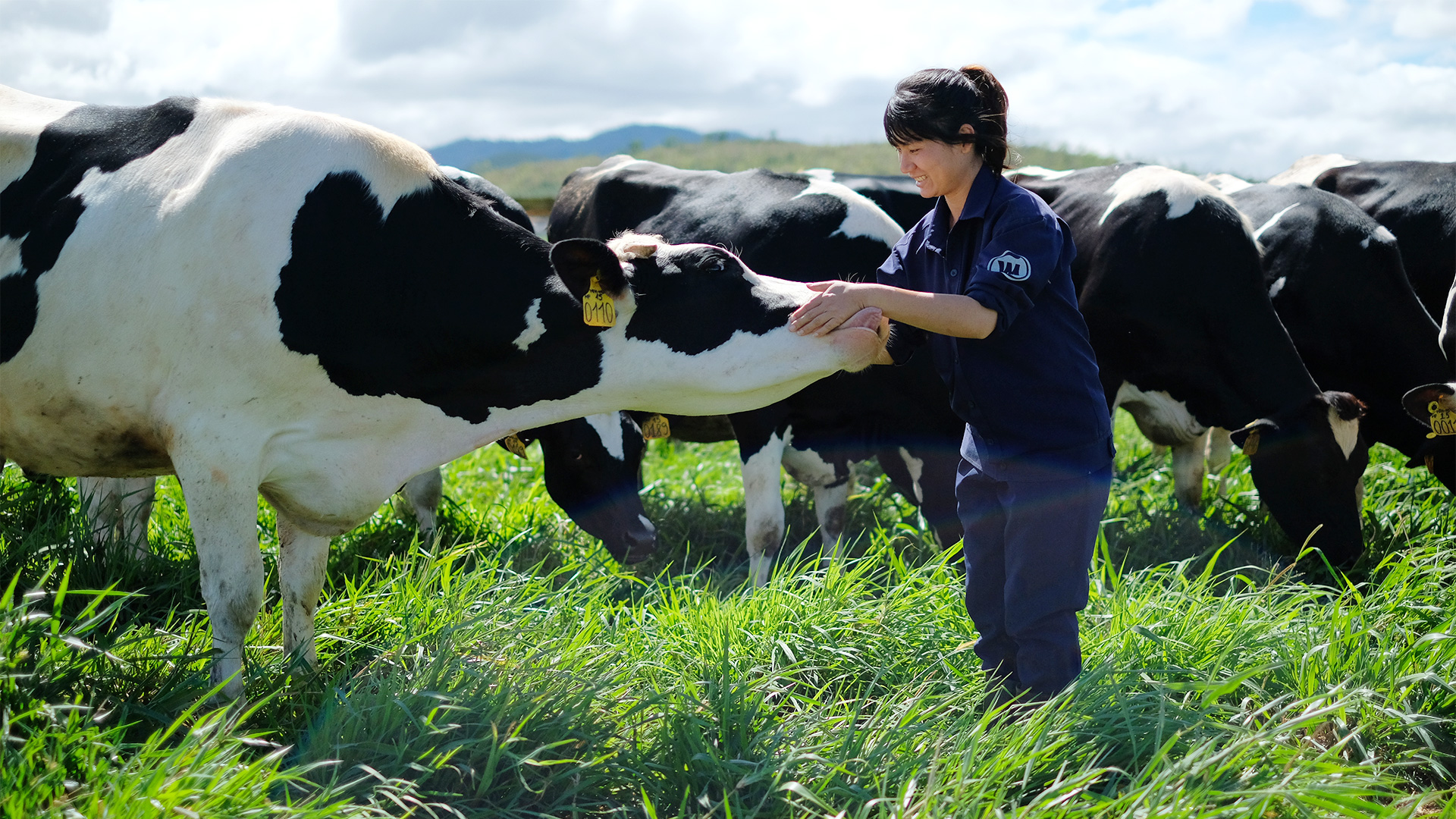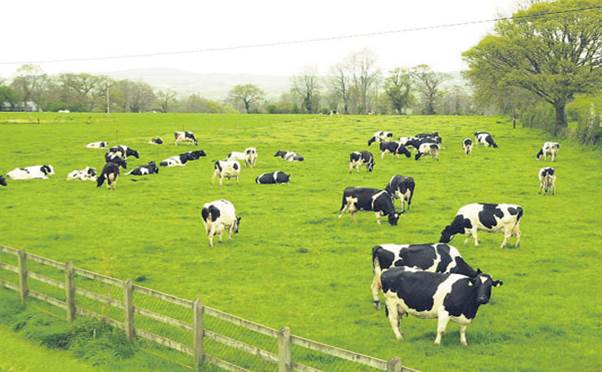Is Cattle Farming in a Ranch Model Difficult?
Cattle farming in a ranch model is becoming increasingly popular due to its economic potential and stability. However, to succeed with this model, farmers must equip themselves with the necessary knowledge and skills.
Advantages of Cattle Farming in a Ranch Model
Stable Income:
With large-scale operations and proper management, a cattle farm can provide a stable and long-term source of income.
Self-sufficient Feed Supply:
Many farms grow their own grass and leguminous plants to reduce feed costs.
Sustainable Development:
Sustainable cattle farming contributes to environmental protection and rural economic development.
Meeting Market Demand:
Beef and dairy products always have high market demand.
Challenges of Cattle Farming
High Initial Investment:
Building barns, purchasing equipment, and acquiring high-quality cattle require significant capital.
Complex Management:
Managing a cattle farm requires expertise in nutrition, veterinary care, and farming techniques.
Diseases:
Cattle are prone to infectious diseases, which can cause significant losses if not properly managed.
Market Consumption:
Finding stable markets and reasonable prices for products is a challenge.
Regulations and Policies:
Policies related to land, environment, and veterinary regulations can impact farm operations.

Key Factors for a Successful Cattle Farm
- Choosing the Right Breeds: Select cattle breeds that suit the climate, farming purpose, and market demand.
- Building Proper Barns: Ensure barns are well-ventilated, hygienic, and suitable for different cattle types.
- Providing Quality Feed: Ensure a clean, nutritious diet suitable for each growth stage.
- Health Care: Regular health checks, vaccinations, and disease treatment.
- Waste Management: Scientific waste treatment to protect the environment.
- Expanding the Market: Develop distribution channels and establish relationships with customers.
What is Needed to Start a Cattle Farm?
1. Develop a Detailed Business Plan
Market Research:
Understand market demand, pricing, competition, and distribution channels.
Selecting Cattle Breeds:
- Beef Cattle: Popular breeds include Brahman, Hereford, and Angus.
- Dairy Cattle: Common dairy breeds include Holstein and Jersey.
- Hybrid Cattle: Crossbreeds often have superior health and adaptability.
Determining Farm Size:
The scale of the farm depends on capital, land area, and business goals.
Funding:
Ensure sufficient capital for barn construction, equipment, cattle procurement, and initial operating costs.
2. Barn Construction
Location:
Choose a high, well-ventilated area away from polluted zones.
Design:
Barns should be well-ventilated, hygienic, easy to clean, and provide space for cattle movement.
Materials:
Use durable, easy-to-clean materials such as concrete and bricks.
Drainage System:
Ensure good drainage to prevent flooding and environmental pollution.
3. Feed Preparation
- Grass: Grow natural or cultivated grass for cattle feed.
- Straw: Use straw to supplement fiber.
- Concentrated Feed: Supplement with bran, corn, and soybeans for energy.
- Minerals and Vitamins: Provide necessary nutrients for cattle health.
4. Health Care
- Vaccinations: Ensure full vaccination to prevent diseases.
- Regular Health Checks: Detect diseases early.
- Barn Hygiene: Regular cleaning to prevent pathogens.
5. Waste Management
- Manure Treatment: Process cattle manure to reduce pollution and use it as fertilizer.
- Biogas Production: Install biogas systems to generate biofuel from cattle manure.
6. Market Expansion
- Build Relationships with Buyers: Find reliable partners for product distribution.
- Join Trade Fairs: Promote farm products to more consumers.

Other Essential Factors
- Clean Water Supply: Ensure a safe water source for cattle.
- Labor: Have enough workers for cattle care and farm management.
- Legal Permits: Complete necessary legal procedures for farming operations.
Effective Cattle Farming Models
- Beef Cattle Farming: Raising cattle for meat production.
- Dairy Farming: Raising cows for milk production.
- Hybrid Breeding: Combining meat and dairy production.
- Breeding Farms: Raising cattle for selling calves.
Advice for Beginners
- Learn Farming Techniques: Study modern cattle farming techniques, common diseases, and treatments.
- Visit Other Farms: Gain experience from experienced farmers.
- Create a Detailed Plan: Develop a business plan covering breed selection, barn construction, and market strategies.
- Join Farming Communities: Participate in farming forums to exchange knowledge with others.
Cattle farming in a ranch model is both a challenging and rewarding endeavor. While it requires significant investment, careful planning, and specialized knowledge, it also offers long-term economic benefits if managed effectively. Success in this field depends on choosing the right cattle breeds, building proper facilities, ensuring a nutritious diet, and maintaining herd health through preventive care.
Beyond daily farm operations, farmers must also focus on waste management, disease prevention, and expanding their market reach. Establishing strong relationships with buyers, leveraging modern farming technologies, and continuously improving farming techniques are essential for long-term sustainability.
Although cattle farming demands patience and dedication, it can provide stable income and contribute to local economic development. With the right strategy and a strong commitment, anyone with a passion for cattle farming can turn it into a successful and sustainable business.
Here are some additional topics you might be interested in:
Top 5 Ways to Protect Pets During the Holiday Season
5 extremely serious mistakes when raising pets
Những Mặt Hàng Được Yêu Thích Gửi Tặng Dịp Lễ, Tết Và Cách Vận Chuyển An Toàn
Vietnam Airlines và Đội Tàu Bay Đẳng Cấp: Các Loại Máy Bay và Điểm Nổi Bật














